Modelling of instabilities in aluminium electrolysis cells
with Jean-Frédéric
Gerbeau, Claude
Le Bris
and Antonin
Orriols.
 Version
française
Version
française
The physical phenomena governing the behavior of aluminium electrolysis
cells are complicated and couple fluid mechanics, magnetic, chemical
reactions...
In our work, we focus on the magnetohydrodynamic modelling of cells.
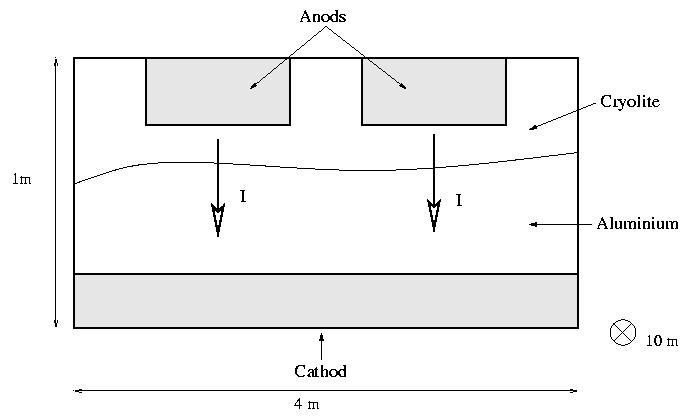
An electrolysis cells is composed of some anods, which drive a very
intense
electric current through a bath (cryolite) and aluminium, both molten,
towards the cathod. We are especially interested in the modelling of
the
movements of the interface between the two liquids (the bath and the
aluminium).
These movements are created by huge magnetic fields, due to the
electric
conductors bringing the current to the cells.
For the mathematical and numerical questions raised by the modelling
of this phenomenon, we refer to :
- The
PhD thesis of Jean-Frédéric Gerbeau
- (with J-F. Gerbeau, C. Le Bris and N. Ligonesche)
Metal
pad roll instabilities, proceeding of the 2002 TMS Annual Meeting
and
Exhibition.
- (with J-F. Gerbeau and C. Le Bris) Simulations of MHD flows with moving
interfaces, Journal of Computational Physics, volume 184, pp
163-191, 2003.
- (with J-F. Gerbeau and C. Le Bris) Modelling and simulation of the industrial
production of aluminium: the nonlinear approach, Computers and
Fluids, volume 33, pp 815-820, 2004.
- (with J-F. Gerbeau et C. Le Bris) Numerical simulations of
two-fluids
MHD flows, Fundamental and Applied MHD. Proceedings of the Fifth
international
PAMIR Conference, p. I.101-I.105, 2002.
- (with J-F. Gerbeau et C. Le Bris) Modeling and simulation of
MHD
phenomena
in aluminium reduction cells, Proceedings of the fourth
International
Conference on Electromagnetic Processing of Materials, EPM 2003,
C3-10.4,
p. 57-62, 2003.
- (with T. Tomasino, M. Le Hervet et O. Martin) Stability analysis of simplified
electrolysis cells with Mistral, proceeding of the 2006 TMS
Annual
Meeting
and Exhibition, Light Metals, p. 335-340, 2006.
- (with J-F. Gerbeau et C. Le Bris) Mathematical methods for
the Magnetohydrodynamics of liquid metals, to appear in Numerical
Mathematics and Scientific
Computation, Oxford University Press.
Jean-Frédéric
Gerbeau, Claude
Le Bris and I received the Prix
CS 2002 of the company Communications
& Systèmes for our work about the
numerical simulation of aluminium electrolysis cells (pdf).
Some numerical results :
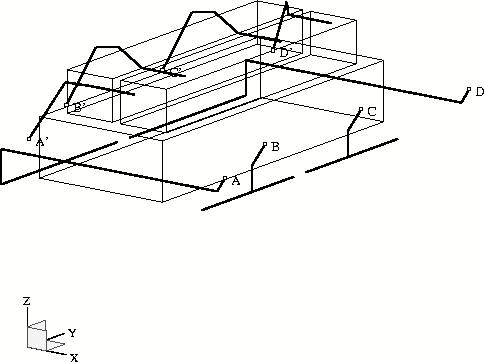
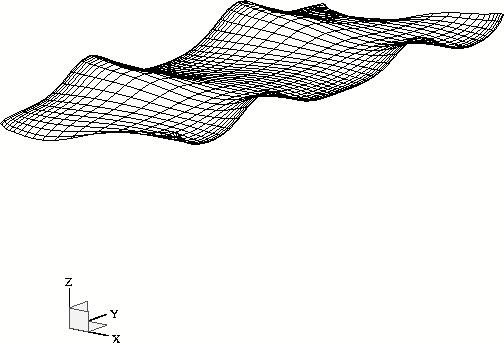
The shape of the interface : on the left, the electric circuit and
on
the right, the interface obtained with this circuit.
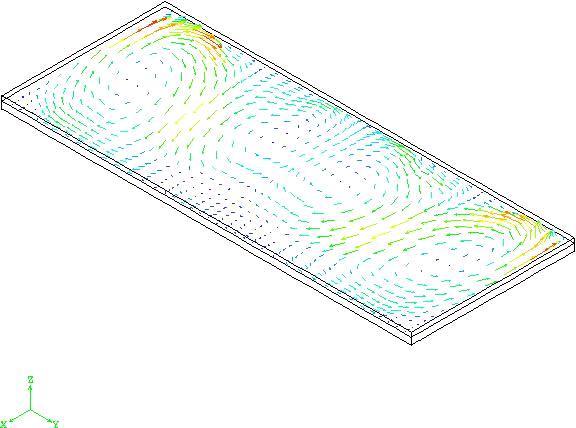
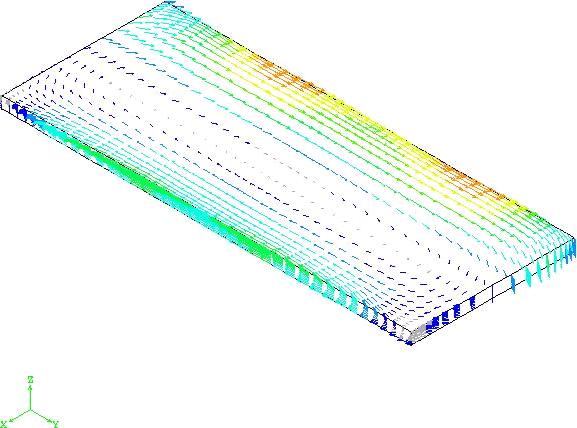
Velocity (left) and magnetic (right) fields obtained with the same
electric
circuit as above.
Here are some movies showing instabilities in a cylindrical cell.
These
instabilities are due to a too much intense vertical component of the
magnetic
field (see above the proceeding
article
about Metal pad roll instabilities). First a case with a small magnetic
field and no instability (mpeg),
and then a case with an instability (mpeg).
A link to the site of Jean-Frédéric Gerbeau
about
the same subject : http://www-rocq.inria.fr/bang/MHD/
Other links:
BACK to homepage.
Last update: May 3rd 2006.



